Private Tours
Do you want to visit cultural and archaeological attractions in Sicily and Syracuse? Are you afraid of late traffic or public transport?
Autoservizi Scuderi offers cars and minibuses to guide tours for tourists and groups throughout Sicily.
Enjoy your visit to the museum, archaeological sites, squares and places of interest: with our services you will have more time and more fun!
Our drivers will take you close to your destination and with our comfortable and safe vehicles, you will have fun with the transfer.
We guide you wherever you want and enjoy your holidays!
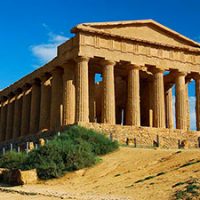
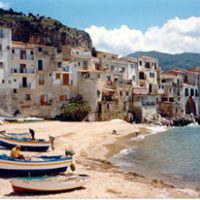
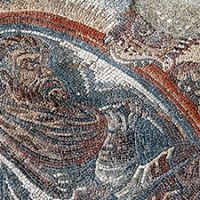
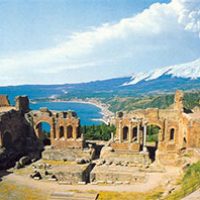
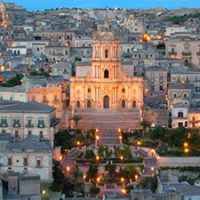
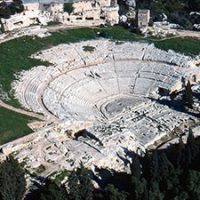
Syracuse is the perfect mix of the Greek, Roman, medieval, Renaissance and Baroque cultures that Sicily can present.
First of all we will visit the famous archaeological area, admiring the magnificent remains of Greek history that made Syracuse one of the most important cities of the time.
We will visit the largest Greek theater in Sicily and the incredible cave called the Ear of Dionysus.
We will continue by visiting the island of Ortigia, the cradle and historic center with its majestic cathedral, all without missing the city’s elegant shops and cafes.
Guided tour of the spectacular Valley of the Temples: Listed in 1997 in the “World Heritage of Humanity” by UNESCO, the archaeological area of Agrigento is an important historical testimony of Magna Graecia and of the subsequent era. The remains of the Hellenistic and then Punic-Roman city, the imposing Doric temples – almost intact -, the agora, the pagan and Christian necropolises and the dense network of underground aqueducts, constitute the wealth of a site that extends over about 1300 hectares and tells a millenary story that began in the sixth century. B.C. with the foundation of the ancient Greek colony of Akragas. Articulated on terraces on top of a plateau and with its checkerboard urban layout, Akragas was one of the largest Greek cities in the Mediterranean.
Real heart of the archaeological area of Agrigento, the area of the Temples is a unique place to visit. The Temple of Zeus or Olympian Jupiter, of which only the foundations and the main altar survive today, was one of the largest Greek temples of antiquity. The oldest temple in Agrigento is instead that of Heracles or Hercules, while the best preserved is certainly the Temple of Concordia: in all likelihood the most impressive Greek Doric temple that has reached the present day after the Parthenon in Athens. Contemporary to the Temple of Concordia is that of Hera Lacinia or Juno, which was heavily damaged by a fire towards the end of the 5th century. BC. To visit are also: the Temple of the Dioscuri; the Sanctuary dedicated to the chthonic or “earth” divinities – Demeter and Persephone – who were strongly revered by the women of the area; that of Hephaestus or Vulcan, separated from the previous one by a pool at the confluence of an ancient and articulated aqueduct; the Temple of Isis, from the late Augustan-Tiberian age; that of Demeter, connected to the Rupe Atenea, the ancient acropolis of the city; the Sanctuary of Asclepius or Aesculapius, Greek god of medicine, center of therapeutic rites, and that of Athena, now part of the Church of Santa Maria dei Greci.
The Valley of the Temples in Agrigento, a UNESCO World Heritage Site, is one of the most important sites of Magna Graecia, the cradle of culture that was also the birthplace of the pre-Socratic philosopher Empedocles. Imposing and well preserved is the Temple of Concordia (430 BC), while on the highest point lies the Temple of Juno (450 BC) which also bears the signs of the war with the Carthaginians. The Temples of Hercules (hero of ancient Akragas), Zeus, Castor and Pollux, transport you to the pages of the history books. Extra entrance ticket.
In addition to the Valley of the Temples, we will also visit Piazza Armerina, a splendid city of art, which boasts glorious monuments and sites of great archaeological interest. The pride of the town is the Villa Romana del Casale (4th century AD), a Roman residence rich in architectural and decorative elements including the amazing mosaics famous all over the world. The Villa, protected by UNESCO since 1997, belonged to an exponent of the Roman senatorial aristocracy, perhaps a governor of Rome. Piazza Armerina is surrounded by the forests of the Ronza Park and from which to admire suggestive landscapes, for example near the Olivo dam or the archaeological site of Montagna di Marzo.
Our journey begins by visiting the highest volcano in Europe, Mount Etna. Arrived at the top, after walking and doing various activities offered by the volcano from Rifugio Sapienza at about 1900 meters accompanied by authorized guides, you will visit the four craters up to 3000 meters high.
Later we will continue to Taormina, the pearl of the Mediterranean, suspended like a flowered balcony over the Ionian Sea to dominate the bay of Giardini Naxos. Taormina is known and famous for its climate, its rich vegetation, its superb buildings, its elegant squares and its panoramic position about 200 meters above the sea, at the foot of Monte Tauro. The excursion includes reaching Porta Messina, the entrance to the city, and free time to visit the historic center also dedicated to shopping along Corso Umberto and a visit to the “Ancient Theater” still today, as 2300 years ago, a place of art and culture.
We will visit, accompanied by a local guide, the Cathedral of Monreale, an architectural masterpiece of the Norman age, in which expressions of Islamic, Byzantine and Romanesque culture combine to create one of the highest creations of the Italian Middle Ages. Founded by William II in 1174 and quickly completed together with the abbey, the royal palace and the archbishop’s palace, it forms a single complex with them. The façade in Piazza Guglielmo II is enclosed between two mighty square towers and preceded by an eighteenth-century portico. The interior, vast and solemn, is of great splendor and majesty. The walls of the naves, the sanctuary, the apses are all covered with gold-backed mosaics. In the median apse, at the top of the basin, the colossal half-length figure of Christ pantocrator.
Afterwards we will continue to Palermo, the provincial and regional capital, located at the foot of Monte Pellegrino. Walking through the historic center, you will discover the main monuments of the city, rich in Byzantine, Arab-Norman and Baroque architecture. We will visit Piazza Pretoria and the Martorana church, one of the most famous Norman style churches in Palermo. The unmissable appointment will be the visit of the Cathedral, with its spire towers, its mullioned windows, its intertwined and pointed arches. Through the narrow streets of the typical “Capo” market, we will arrive in Piazza Verdi in front of the Massimo theater, the beating heart of the city. We will continue with a panoramic tour of the city with a stop in Piazza Marina (Villa Garibaldi) to conclude with the convent of the Capuchin friars and the optional visit of the homonymous “Catacombs”.
In the heart of the Madonie Park, 700 meters above sea level, about 10 kilometers from the coast of the Tyrrhenian Sea, we will visit the small and charming Gratteri. Due to its happy position, surrounded by small mountains and hills, it is located like an “eagle’s nest on the rock” overlooking an endless and enchanting panorama from above. Having become a destination for tourists, especially foreigners, we will appreciate the pristine air, the boundless greenery, the climate of rural peace and the proximity to the sea.
We will continue to the Sanctuary of Gibilmanna, located at 800 m above sea level in the middle of a forest of oaks and chestnuts. It was one of the six sanctuaries created by Gregory the Great in the sixth century, it is the result of numerous changes in the Baroque era. The facade is from 1907. In a chapel, an 11th century fresco is worth seeing, depicting the Madonna and Child in Byzantine style.
Later we will visit Castelbuono, which owes its origins to the Ventimiglia, Lords of the County of Geraci, who, in the early 1300s, decided to build a castle on the hill overlooking the ancient Byzantine farmhouse of “Ypsigro”.
A few kilometers from the sea, Castelbuono has developed at the foot of the Madonie in a pleasant valley inhabited already in the Neolithic period and rich in Greek, Roman, Arab and Byzantine memories.
We will stroll through the picturesque old town and stop for a specialty tasting at the renowned Fiasconaro pastry shop.
Finally, a visit to the Ventimiglia castle, an ancient stately home, is also included.
